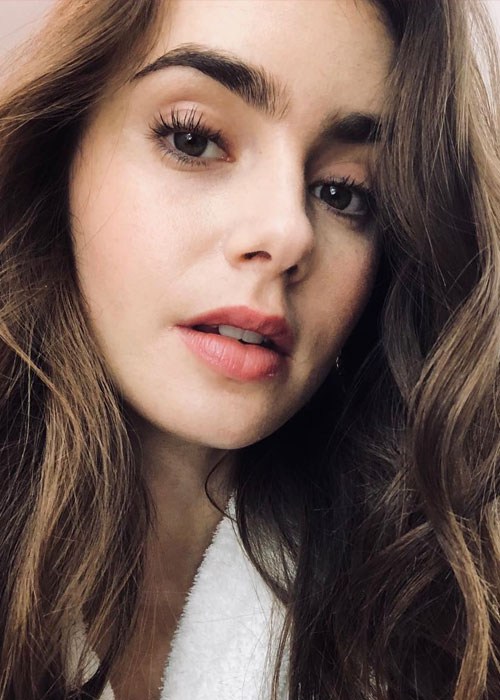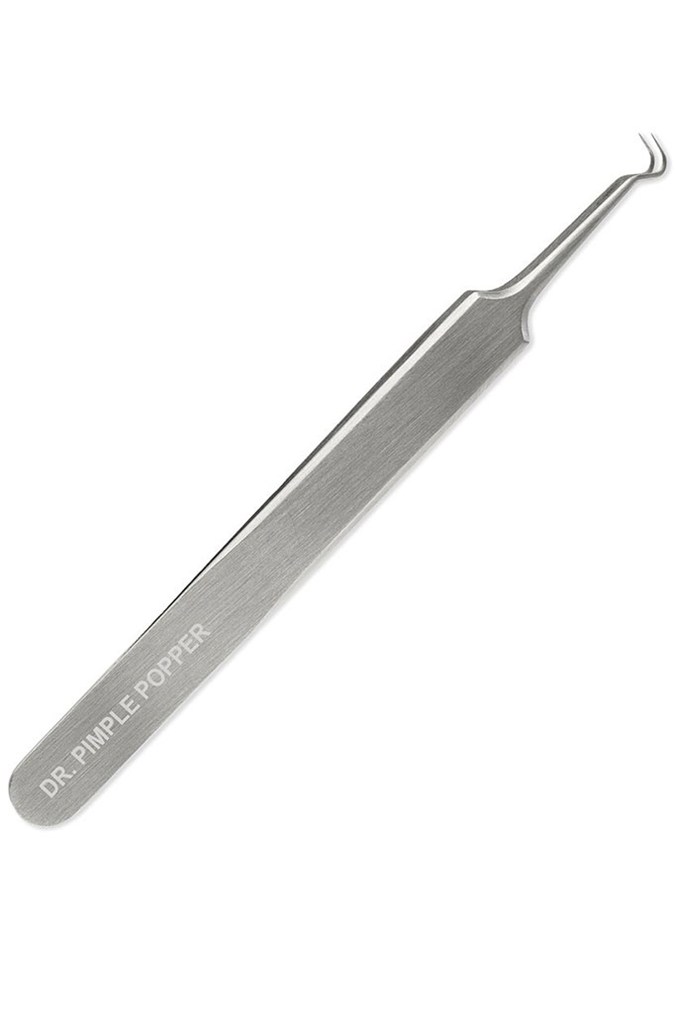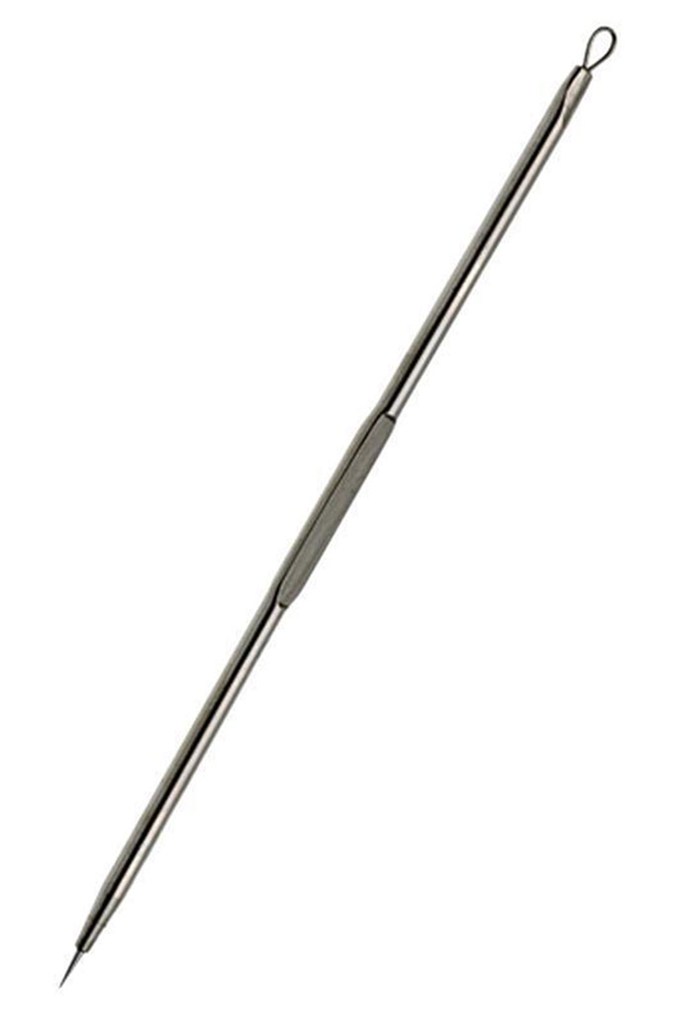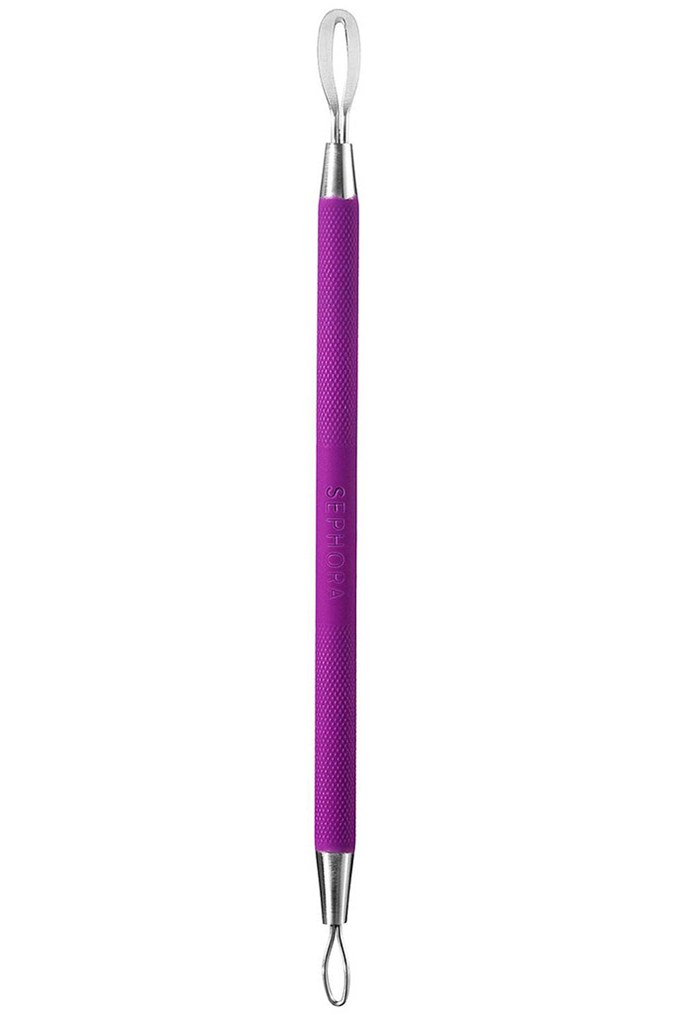How to use a blackhead remover tool without screwing up your skin

The best way to extract clogged pores yourself
The best way to extract clogged pores yourself
Let’s be honest here – if you look in the mirror and spot a blackhead on your face, you’re going to pick at it. And if you’re going to pick at it, it’s better to use a blackhead extractor than your fingers.
But while we would all like to think we’re capable of tackling a blackhead like pimple queen Dr Sandra Lee (aka Dr Pimple Popper), chances are you’re doing it wrong and could be damaging your skin in the process.
Blackheads are essentially a clogged pore, and removal can be fickle since they tend to sit quite deep in the lining of your pore. They’re basically like a plug of sebum or oil, along with a build-up of dead skin cells, that blocks the hair follicle. You can find out *everything* you need to know about blackheads here.
One of the best ways to remove blackheads by yourself is to use blackhead tweezers. But before you start poking around, it’s pretty crucial to know how to use pimple tweezers correctly so you don’t mess up your skin. We spoke to skin care expert and founder of Paula's Choice Skin Care, Paula Begoun, and dermal therapist and dentist Dr Giulia D'Anna from Dermal Distinction on the best way to use blackhead tweezers.
What are blackhead tweezers?
Blackhead tweezers are small metal tools that have sharp curved tips to gently squeeze and pluck debris out of pores. Curved blackhead tweezers are commonly used by skin specialists to clear clogged pores, but they’re also available for at-home use. Dr Sandra Lee recently released her own Dr Pimple Popper Blackhead Tweezers – they’re available to buy online and ship to Australia.
Another common pimple popper tool is the comedone extractor, which comes in a few different versions. The first type has two ends - one with a metal loop and one with a lancet (such as Manicare Pimple and Blackhead Remover). The loop side is placed over the blackhead and similarly to Dr Sandra Lee’s blackhead removal tweezers, gentle pressure is applied to push out trapped sebum. The sharp side can be used to puncture a hole in a whitehead to ‘lance’ the build-up inside.
The third type of blackhead extractor has a different sized/different angled loop on either end (like Sephora Collection Double-Ended Blemish Extractor) and can be used to extract blackheads of various sizes. The angled loops on these tools are great for reaching into those hard-to-get-to areas like the side of your nose.



How to use blackhead tweezers
Both Begoun and Dr D’Anna recommend professional blackhead removal treatments over at-home tweezing, but if you decide to go down the DIY route, you need to make sure you know what you’re doing. Using blackhead removal tweezers the wrong way can push debris further into your pores and possibly cause infections, more breakouts, or even scarring. Eek!
“If you were to use blackhead tweezers, make sure that you come out of the shower and do the extraction immediately. This is when the blackhead will be softened and less resistant to removal. Line up the tines so that they are open and facing up, engage either side of the blackhead and gently squeeze so that the blackhead is removed. You can then use the sharp tip of the tweezers to engage the blackhead and pull it out the rest of the way,” says Dr D’Anna.
“Always make sure that you do not press too hard or deep with any instrument or your fingers, as scarring is a real problem. Too many times I have seen a blackhead being removed, only to have an awful red scar on the skin take its place,” Dr D’Anna warns.
Other blackhead removal options
Begoun says that although it’s possible to use tweezers to remove blackheads, this technique usually won’t get rid of the whole thing, and will only get to the uppermost portion of the sebum. “It doesn’t reach the root of the problem hiding deeper in the pore lining. If you continue tweezing to reach further into skin, you risk causing permanent damage that could not only damage the pore lining, but potentially lead to scarring or an infection, both of which would be much bigger issues than blackheads.”
If you’re attempting to remove a stubborn blackhead that just isn’t budging, it’s best to seek help from the professionals. “We use magnification to visualise the blackhead, and help ease it out. Additionally, we can employ the use of steamers, microdermabrasion and aqua facial treatments to help remove dead skin cells and extract the offending black pore clogger,” says Dr D’Anna.
Begoun says using a strict skin care routine at home will also help to gently lift away dead skins cells so that the blackheads are less likely to occur. “Stubborn blackheads need a dedicated skin care routine that includes higher-strength (such as four per cent salicylic acid, which is the amount present in Paula’s Choice Skincare RESIST Advanced Pore-Refining Treatment), professional extractions from a qualified aesthetician, and possibly a series of high-strength BHA peels given by a dermatologist.”
Looking for more blackhead removal options? Check out the best face masks for blackheads.
What’s your go-to treatment for removing blackheads? Let us know in the comment section below.
Main image credit: @lilyjcollins

Erin Docherty is a Beauty Writer for BEAUTYcrew, Beauty Editor for Women's Health magazine and a Grooming Writer for Men's Health magazine. She has a keen interest in cosmeceutical skin care and is currently working on minimising her 9-step skin care routine – because ain’t nobody got time for that. When she’s not writing about the latest beauty news, or applying copious amounts of serum, you can find her spending all her money in Sephora.
Related tags
Manicare /







